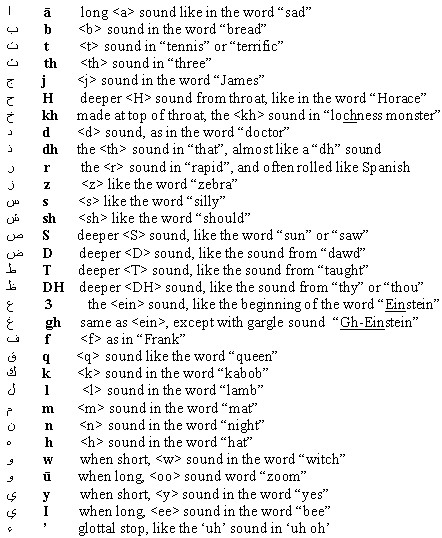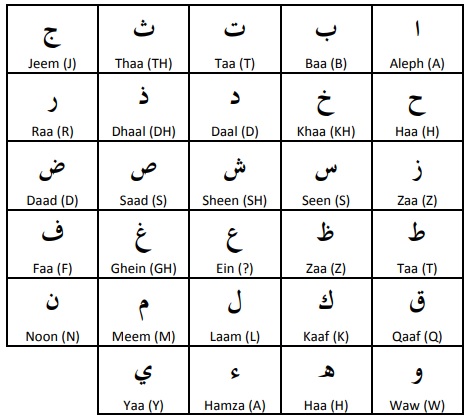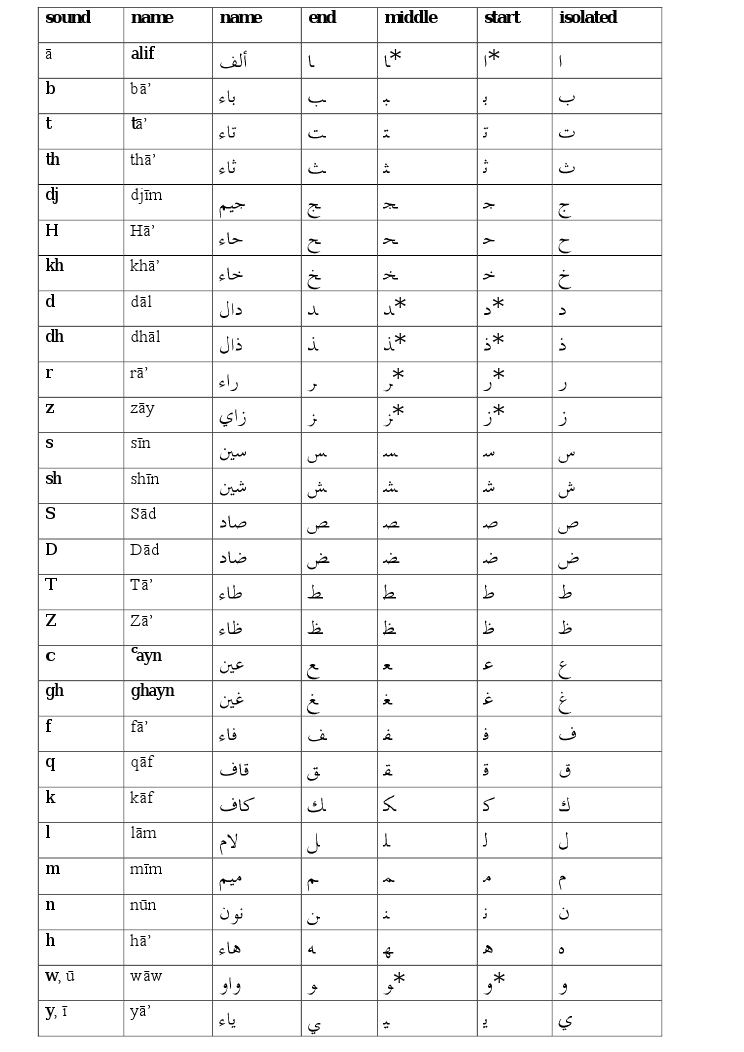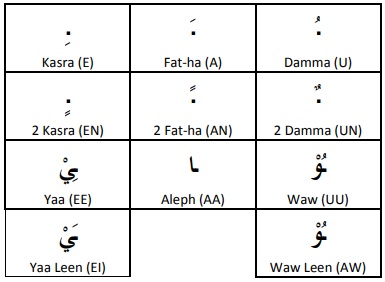Arabic Alphabet 101
Welcome to a basic crash course in the Arabic Alphabet! Quickly get up to speed on how to recognize and use the alphabet of the Arabic language to get you started in basic reading and writing. You will want to take more in depth courses in Arabic script later, but for now familiarize yourself with the fundamentals. Don’t be intimidated by the lines and markings. The purpose of this quick overview is to learn the scope of the alphabet, and what markings you will see in Arabic script.
What exactly am I looking at here? I see squiggly lines and dots.
- Arabic is read from right to left. This is not difficult, just reversed from many other languages.
- Nearly all of the Arabic letters connect together, depending on where they are placed: beginning, middle or end of a word.
- There are 29 letters in the Arabic alphabet. You can learn 29 right?
- Arabic has no capital letters.
- There are only three commonly written vowels (aleph (a), waw (w), and yaa (y)). The rest of the letters are consonants. The rest of the vowels are separate small marks that go on top or underneath letters. You will find out later that it is common to remove these small vowel markings.
The letters of the Arabic Alphabet

Those look a little small, can I get a closer look?
To give you a more zoomed-in visual of the letters, here is another chart of the letters:

Wait, the letters appear to change shape sometimes?
- Each letter has 4 different forms.
- The letter isolated by itself
- At the start of a word
- In the middle of a word
- In the end of a word
Here is a chart that shows the 4 different forms of each letter:

* letters with an astrisk cannot be connected to the left to other letters (there are 6)
That’s a big chart. Are the letters hard to learn?
Don’t memorize this list now. Just glance at some of the letters, and see how they change depending on their position in the word. Most of the changes you see above make sense when you start putting the letters together, and the form changes are to keep the flow of the letters in the words.
What are the other marks I see?
In addition to the letters, you will also see markings for the vowels. The “short vowels” are smaller, and may appear above or below the letters. The “long vowels” are bigger and written in the words. Here are the vowel markings you will encounter. The top line shows the three basic short vowels. Notice the second line, where the short vowels markings are simply doubled. It simply adds the sound of the letter N at the end, but more on that later.

Will I see any other markings in the alphabet?
There are a two other markings you will regularly encounter:

- The Shadda is a sign of emphasis, and marks a long consonent sound.
- The Sukoon indicates that a consonant is not followed by a vowel, and no sound should follow the letter (slight break).
Congratulations! You’ve pretty much seen all there is to see with the Arabic alphabet. Now that your overview is complete, let’s dive more into how the alphabet works.
